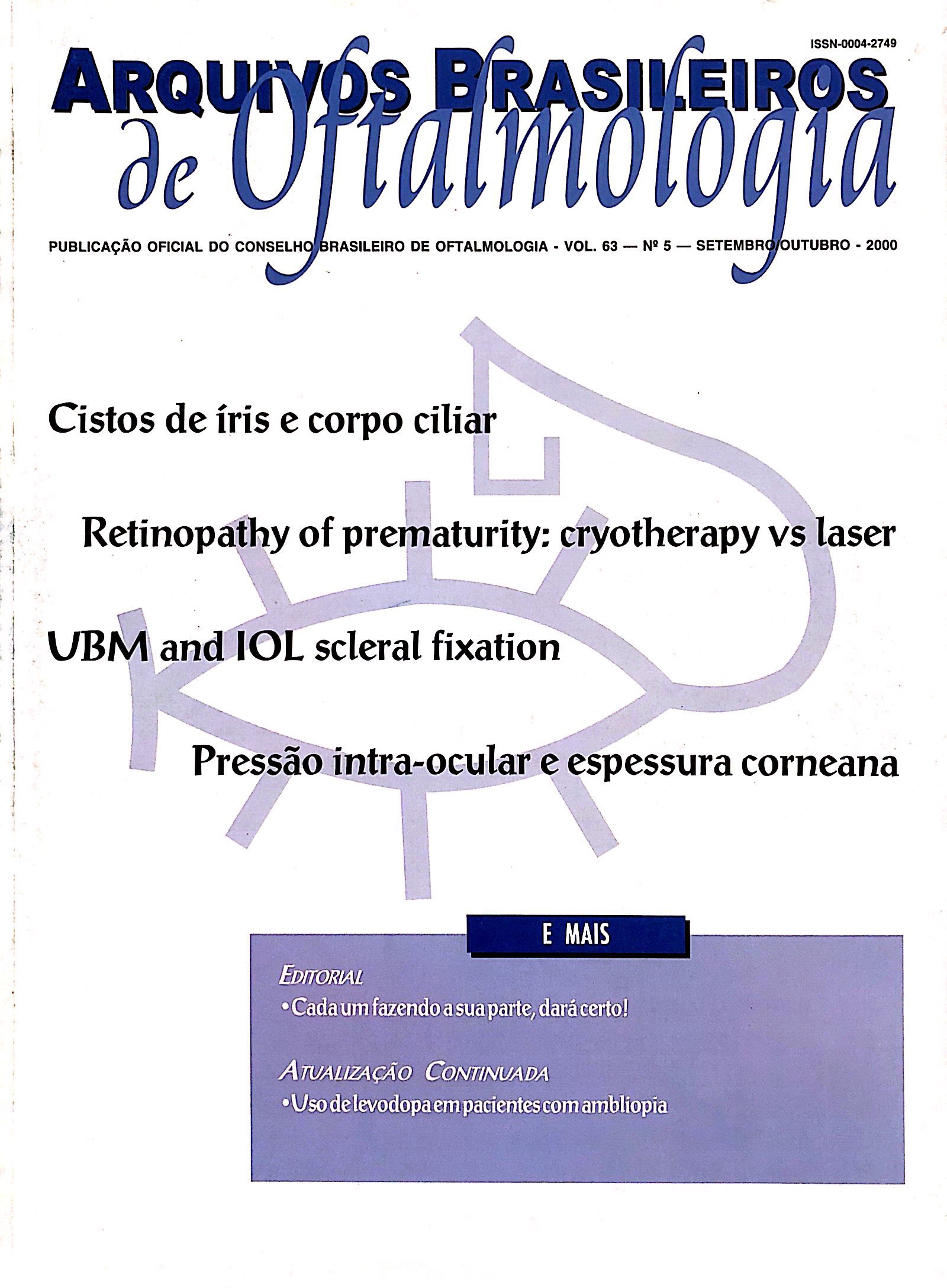Purpose: To assess, through ultrasound biomicroscopy (UBM), the positioning of the intraocular lenses (IOL) haptics as related to the ciliary sulcus by using a scleral fixation technique; and to evaluate, as well, if two fixation points are sufficient to avoid tilting of the lenses. Methods: Sixteen aphakic eyes underwent an IOL implan-tation by means of the same scleral fixation technique, performed by the same surgeon. One month following surgery, both the positioning of the IOL haptics and the distances between the IOLs and the cornea were assessed by UBM. Results were statistically studied. Results: Of the 32 intraocular lenses haptics fixed to the sclera, eight were placed in the ciliary sulcus and 24 were placed out of the ciliary sulcus. There was no statistical difference in the distances measured between the intraocular lenses and the cornea for the haptics placed out of the ciliary sulcus as compared to the haptics placed in the ciliary sulcus, suggesting that other factors, besides the distance to the limbus, may be relevant in the positioning of haptics in the ciliary sulcus. The same measurements performed at 3, 6, 9, and 12 hours, on the periphery of the lenses, were also similar, suggesting that 2-point fixation is sufficient to avoid tilting of the lenses in the eye. Conclusions: Further factors (e.g. the ciliary sulcus opening angle), other than the distance of the limbus where the sclera is transfixed, are important for the placement of the lenses in the ciliary sulcus. Two fixation points are sufficient to avoid tilting of the IOL in the eye.
Keywords: Lens implantation; Intraocular; Pseudophakia; Aphakia; Ultrasonography
